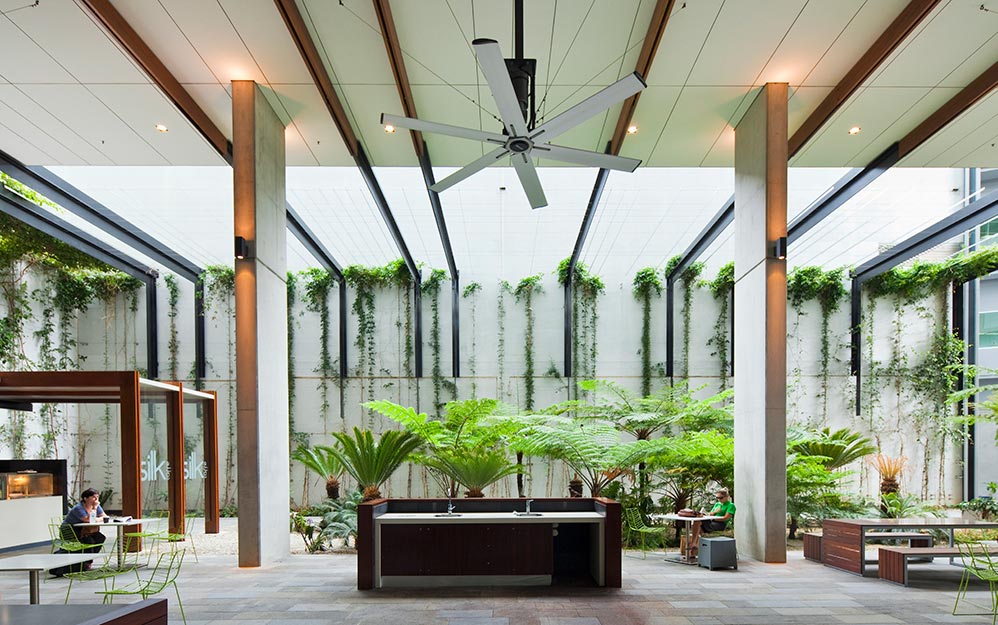Types of Climbing Plants
a) Self Clinging Plants
- Require no auxiliary means of support.
- Can cause damage to the grout in masonry walls.
- Examples – Ivy, Fig, Virginia Creeper.
- Vines are climbing plants which wrap their stems around the support structure.
- They can sometimes put a great deal of load on to the mating structure.
- Examples – Wisteria, Honeysuckle, Chinese Star Jasmine.
- Tendril Climbers develop special off shoots that grab hold of the supporting structure.
- They generally apply lesser loads onto the support structure; however, they may not be suitable in high wind situations.
- Examples – Grape Vine, Passionfruit, Clematis.
- Scrambling plants only use the trellis systems to prop themselves.
- Upward growth is supported by their prickles and thorns.
- Examples – Bougainvillea, Raspberry, Hardenbergia.

plants. Considerations for the selection of the specific species of climbing plant are varied and numerous. There is no short-cut for careful planning and consultation with a horticulturist is advised to ensure the correct selection is made.
As a general rule plants should be selected from species native to the local area – i.e. make a close inspection of the area surrounding the project site and select a species of climbing plant that flourishes in the immediate project vicinity. Other considerations include plant weight/loads, site conditions like exposure to wind, the proximity of other buildings, distance from wall, aspect, soil conditions and reticulation.
ENGINEERING LOADS
The differing growth characteristics of plant species will impose different loads onto the cables – direct plant loads and wind loads. These loads will be transferred through the system connections to the building face. The ability of the mating building structure to withstand these loads must be considered along with any relevant factors of safety or load requirements of the materials used in the mating structure itself. Safety implications, service life, fatigue (as may be caused by wind stresses or repetitive cyclical loading), type of load, exposure to ultraviolet light, corrosion and stress corrosion (such as in high humidity or chlorine environments) must be considered. A ‘safe working load’ is not specified as this is dependent on the factor of safety, which must be determined by the user relative to each application.
SYSTEM SELECTION AND GROWTH
Considerations for the selection of the specific species of climbing plant are varied and numerous. There is no short-cut for careful planning and consultation with a horticulturist is advised to ensure the correct match of system and species is made for satisfactory growth. Plant weight/loads, site conditions like exposure to wind, the proximity of other buildings, aspect, soil conditions and reticulation all need careful consideration.





